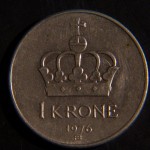West Texas Intermediate and Brent crude fell further on Wednesday as Russia echoing OPECs policy not to cut output exacerbated global oversupply concerns amid economic slowdown in Asia and Europe.
US crude for delivery in February slid 1.28% to $55.54 by 8:58 GMT, having shifted in a daily range of $56.34-$54.96. The contract settled unchanged at $56.26 on Tuesday after it plunged to a 5-1/2-year intraday low of $53.94.
Meanwhile on the ICE, Brent for delivery in the same month was down 0.73% at $59.57 a barrel. Prices ranged between $60.43 and $59.10 during the day. The European crude benchmark fell 1.96% to $60.01 yesterday, having earlier dropped to a 5-1/2-year low of $58.50. Brent traded at a premium of $4.03 to its US counterpart, up from Tuesdays settlement at $3.75.
Russian Energy Minister Alexander Novak said that Russia will keep its output policy unchanged in 2015, reiterating comments made on November 28th that the worlds largest producer wont scale back output and that prices will recover in the medium term. The countrys production will be close to this years 10.6 million barrels per day, Minister Novak said.
Separately, Kuwaits oil minister said there were 1.8 million barrels a day of excess oil in the market and prices could recover in the second half of 2015.
Russias decision not to adjust its policy mirrors OPECs resistance to scale back output at its November 27th meeting in Vienna. Oil prices have fallen by more than 40% since a peak in June as shale drilling in the US drove domestic crude output to the highest in more than three decades, while global demand growth forecasts received a number of downward revisions as Asian and European economies cool down.
“The price will stabilize itself,” Alexander Novak said. “Some investment projects by oil companies may be reconsidered, but so far they have not adjusted anything.”
Discounts
Also weighing on the market, Iran was reported to be offering shipments to Asia at the largest discount in 14 years, following lead producer Saudi Arabias move to slash price differentials.
National Iranian Oil Co. will deliver light crude at $1.80 a barrel below a regional benchmark in January, Bloomberg reported, compared to Decembers premium of $0.13.
Avtar Sandu, senior manager for commodities at Phillip Futures in Singapore, said for CNBC: “The story is still the same. Europe is weak, China is weak, and the U.S. economy is growing by a bit. Its a supply story.”
Private data showed yesterday that factory activity in China slowed for the first time in seven months in December, adding to a pile of downbeat data from the world’s second-biggest oil consumer.
Markit Economics reported that the HSBC Flash China Manufacturing PMI slid to 49.5 in December after stalling at 50.0 in November, hitting the lowest level in seven months and fueling expectations for additional monetary stimulus measures by the People’s Bank of China. The output sub-index was at 49.7 from 49.6 in November, while new orders entered the contraction zone as domestic demand slowed considerably. Price indices also marked a sharp fall.
Better-than-expected business activity growth in Europe provided some support, but the minor improvement failed to make a significant change in the oil segment. Market players eyed todays conclusion of Feds eight monetary policy meeting this year, with eyes pointed to after-meeting comments regarding the central banks interest rate hike timetable.
Supplies
The American Petroleum Institute reported on Tuesday that US crude oil inventories rose by 1.9 million barrels last week, while distillate fuel inventories declined by 1 million. Motor gasoline inventories surged by 2.8 million barrels.
However, APIs data is considered less reliable than EIAs statistics as they are based on voluntary information provided by operators of refineries, pipelines and bulk terminals, while the government requires reports to be filed with the Energy Information Administration. The EIA is expected to report today that crude inventories slid by 2.36 million barrels, while distillate fuel and gasoline inventories both gained, by 0.34 and 1.78 million barrels, respectively.
Pivot points
According to Binary Tribune’s daily analysis, West Texas Intermediate February futures’ central pivot point is at $55.88. In case the contract breaches the first resistance level at $57.82, it may rise to $59.38. Should the second key resistance be broken, the US benchmark may attempt to advance $61.32.
If the contract manages to breach the first key support $54.32, it might come to test $52.38. With this second key support broken, movement to the downside could continue to $50.82.
Meanwhile, February Brent’s central pivot point is projected at $59.92. The contract will see its first resistance level at $61.34. If breached, it may rise and test $62.67. In case the second key resistance is broken, the European crude benchmark may attempt to advance $64.09.
If Brent manages to penetrate the first key support at $58.59, it could continue down to test $57.17. With the second support broken, downside movement may extend to $55.84 per barrel.





